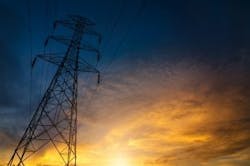Con Ed Gets Okay on More Non-Wires Alternatives: “What Was New Has Become Normal”
Not so long ago, mentioning the term non-wires alternatives evoked a “Huh?”
By Love Silhouette/Shutterstock
But now in New York, non-wires alternatives are becoming standard utility business practice, as evidenced Thursday by an important state Public Service Commission vote. The commission approved an indefinite extension of Consolidated Edison’s Brooklyn-Queens Demand Management Program, one of the most closely watched non-wires alternative tests in the U.S. (CASE 14-E-0302).
“What was new has become normal,” said John Rhodes, commission chair, at the meeting.
Non-wires alternatives are microgrids, solar, energy storage, energy efficiency, demand response, and other local energy installed in lieu of more costly centralized transmission, distribution and power plants. They come into play when utilities need new resources. Regulators may require that utilities compare the cost of conventional approaches against non-wires alternatives and choose the least expensive.
As a result, these programs open up new opportunities for distributed energy resources.
New York was not the first state to pursue non-wires alternatives — Maine was an early leader. But Con Edison’s Brooklyn-Queens program is one of the most striking in terms of the savings it promises. Proposed in 2014, it allows Con Ed to spend up to $200 million on non-wires alternatives to avert the need to build a $1 billion substation.
The program had been set to expire next summer; but Thursday’s commission vote keeps it going indefinitely or until the utility spends the $200 million allotted.
“Continuing this will allow the company to continue to defer the new substation and to enable possible future deferral of other infrastructure projects,” Rhodes said.
He added that the Brooklyn-Queens program “also has provided for important learning opportunities for other utilities, stakeholders and the commission, as non-wires alternatives have become part of New York utilities’ standard business practices.”
Con Edison is allowed recover costs for the program through customer rates. The utility also can receive bonus incentives based on the energy savings it achieves, diversity of distributed energy resources deployed, and other factors.
Con Edison had spent only $46.56 million of its $200 million allotted as of the first quarter of this year, cutting need for about 19 MW of peak power. By June 1, 2018, the utility expects to reach its goal of averting need for 52 MW through the program.
But the utility says it can achieve even greater demand reduction, beyond the goal, without exceeding the $200 million budget, according to the commission’s written decision. Exactly how Con Edison will achieve its next round of savings – what programs it will employ – should become clearer when the utility submits a detailed implementation plan in 60 days.
Non-wires alternatives and REV
Con Edison is pursuing many of the projects with private partners via competitive bid, in keeping with New York’s Reforming the Energy Vision. Also known as REV, the new policy structure is attempting to animate markets for distributed energy.
State regulators are allowing Con Edison to spend only $50 million of the $200 million Brooklyn-Queens budget on utility side grid investments. The remainder of the money goes toward customer-side projects, such as installation of batteries on customer premises, lighting upgrades, and other demand-reduction programs. So far customer participants number about 6,000 small businesses, 1,400 multifamily buildings, and 8,800 family residences. The commission said that the participants have reduced load on the distribution system while reducing their own energy bills.
The New York Battery & Energy Storage Technology Consortium supported the extension, saying it “demonstrates the wisdom” of non-wires alternatives.
Using a series of distributed energy resources, rather than building one large substation, allows the utility “to adjust its investments over time to better align with real time demand and growth,” said NY-BEST in a filing to the commission. “This approach is saving customers millions of dollars and ensuring that New York City gets a cleaner, more flexible, and resilient system.”
Track news about non-wires alternatives by subscribing to the Microgrid Knowledge newsletter. It’s free.
About the Author
Elisa Wood
Editor-in-Chief
Elisa Wood is the editor and founder of EnergyChangemakers.com. She is co-founder and former editor of Microgrid Knowledge.
